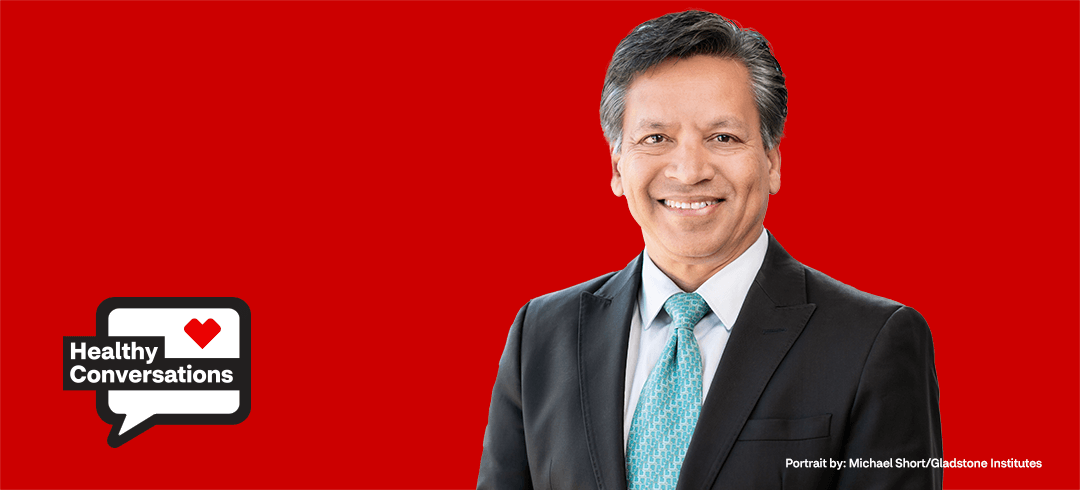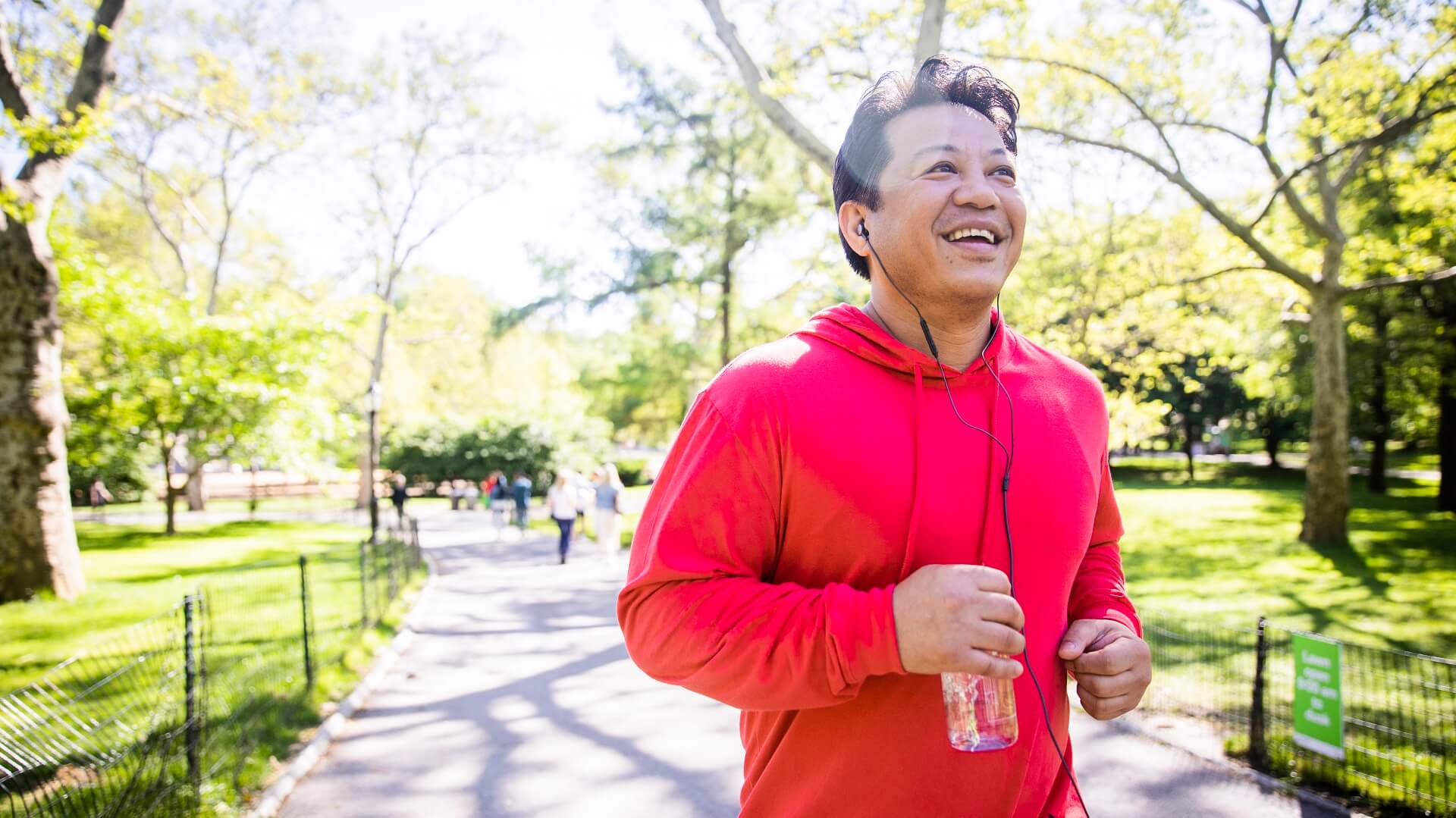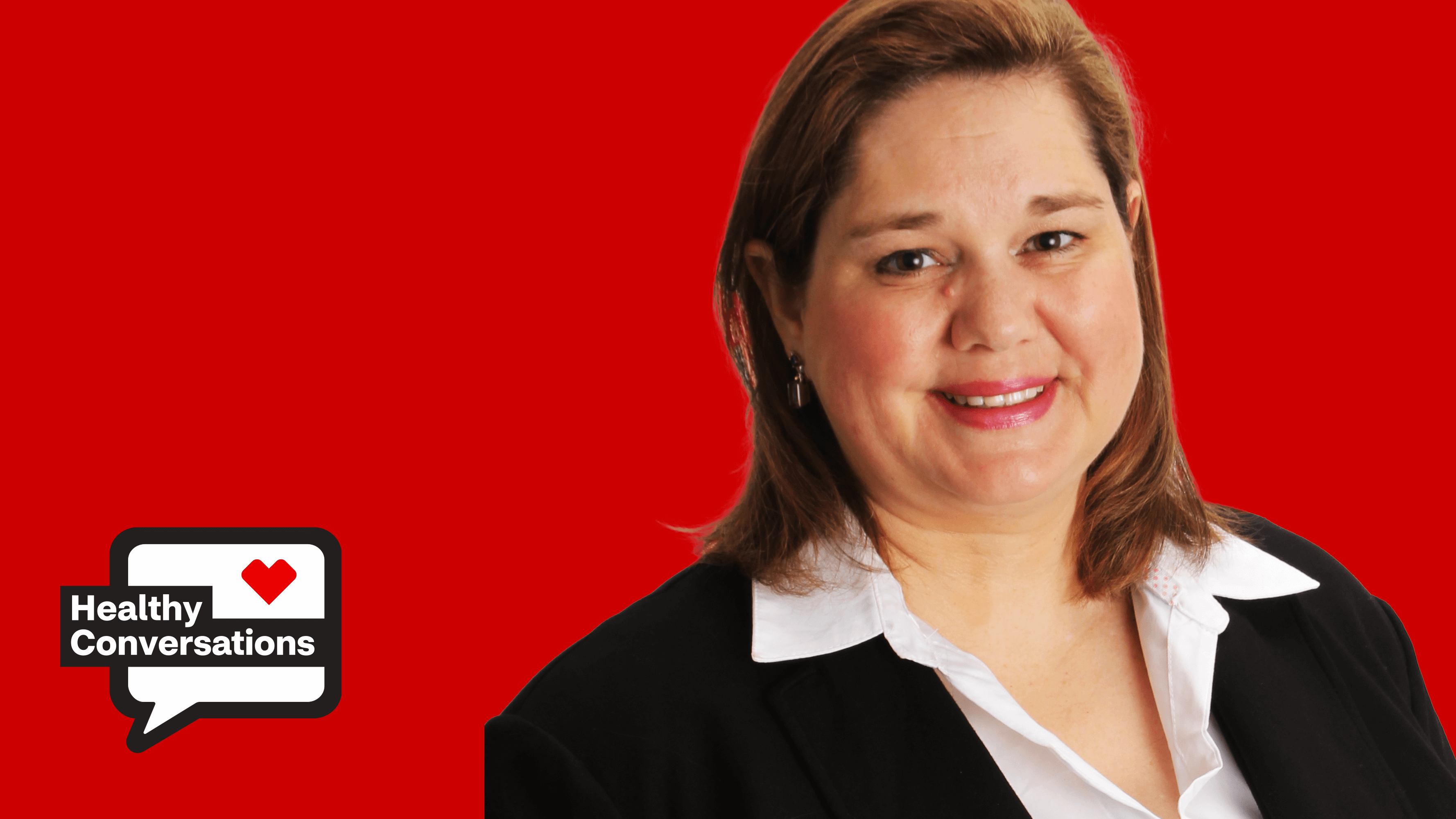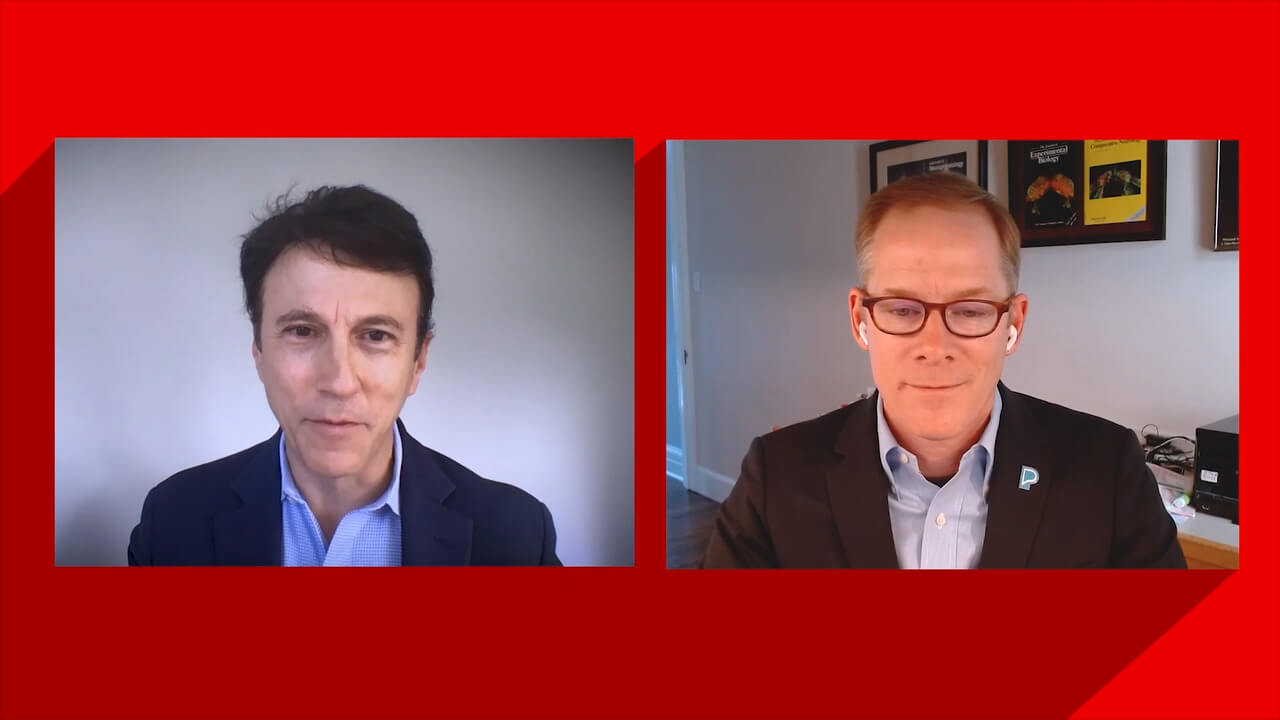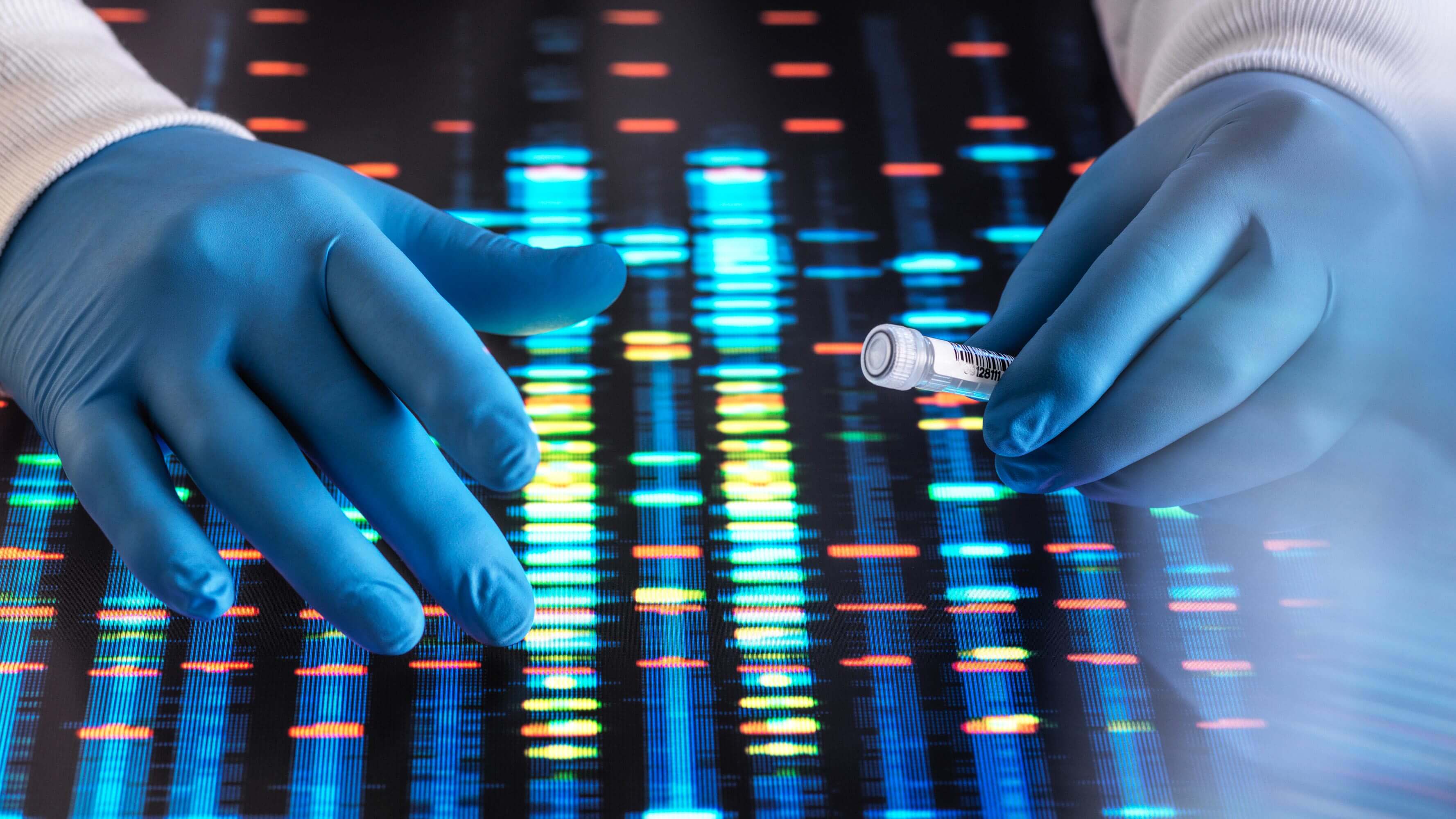DR. DEEPAK SRIVASTAVA (00:00):
The new world is going to be one where as we identify the known genetic causes, we no longer have to accept that that mutation exists. We finally in medicine have the opportunity to think about curing disease.
DR. DANIEL KRAFT (00:16):
Welcome to Healthy Conversations, an original podcast from CVS Health. I'm Dr. Daniel Kraft. Earlier we aired an episode on genetics featuring Trish Brown, the Genomics and Precision Medicine program director for CVS Health. She gave us a great foundation talking about everything from genetic testing to the cost and efficacy of whole genome sequencing to pharmacogenetics. Today, we're taking a deeper dive into how we can actually use genetics to create novel treatments. The Gladstone Institutes is focused on the gene networks that guide heart development in an effort to help patients with congenital heart disease. It's work that could be also applied to other diseases with complex genetic causes.
(00:51):
I'm pleased to be in healthy conversation with Dr. Deepak Srivastava, a cardiologist and the president of the Gladstone Institutes in San Francisco. For those of us listening who aren't familiar, can you give us a little bit about what it does and what you guys are working on there today?
DR. DR. DEEPAK SRIVASTAVA (01:06):
The Gladstone Institute's is a nonprofit biomedical research institute focused on solving some of humankind's most devastating diseases. We try to build highly collaborative teams around four key disease areas, heart disease, brain diseases like Alzheimer's and Parkinson's, viral diseases, namely HIV and more recently, COVID, and immunologic disorders ranging from autoimmune diseases to using immunotherapy for cancer.
DR. DANIEL KRAFT (01:35):
When I visited earlier in 2022, I ran into Shinya Yamanaka, the Nobel Laureate for induced pluripotent stem cells. You also have Jennifer doudna there, the noble laureate for developing CRISPR as a technology. What's it like having a couple Nobel laureates on your team, not just that firepower but the others underneath your roof to get things done?
DR. DEEPAK SRIVASTAVA (01:53):
It's really an amazing environment for innovation given that we're not that large. We're about 30 laboratories with 600 people. As you mentioned, two of those have received Nobel Prizes for really transformative technologies that we use in all of those disease areas. We have a data science institute and biotechnology institute to accelerate discovery in each of our disease areas.
DR. DANIEL KRAFT (02:17):
A lot of interesting innovations, some going from bench to bedside very quickly.
DR. DEEPAK SRIVASTAVA (02:21):
During the pandemic, we quickly mobilized our virology team together with Jennifer Doudna to see if we could use CRISPR technology to develop a very, very sensitive test that could detect nucleic acids in bodily fluids at a level of sensitivity that's similar to PCR, but the rapidity and ease of a rapid antigen test. And so we have developed that and are deploying that for a variety of viral and perhaps even cancer conditions.
DR. DANIEL KRAFT (02:56):
Great example of convergence of technology to solve a challenge. So we're both pediatricians. You're a pediatric cardiologist. I'm a pediatric hematologist/oncologist. What's been a bit of your journey from the bench to the bedside and now leading these efforts?
DR. DEEPAK SRIVASTAVA (03:11):
Yeah, it's been an incredible journey. I have been doing some clinical work most of my career, and the patients that I see in clinic and in the hospital have really informed much of the science that we've done over the years in really trying to solve the problems of why children are born with heart defects and then translate that into potential interventions both for children but also more recently for adults in regenerative medicine. I continue to run my own discovery laboratory at Gladstone to hopefully get to new therapeutics for both children and adults with heart disease.
DR. DANIEL KRAFT (03:50):
Not just a triple threat, you're a quadruple threat. You're also running the organization. What do we know about what causes CHD, congenital heart disease?
DR. DEEPAK SRIVASTAVA (03:57):
After decades of effort of first trying to understand how nature builds a heart because that's what goes awry in children who are born with heart defect, and it affects about 1% of all children born worldwide. So it's very common. Somewhere around half of congenital heart defects can be explained by a definable genetic abnormality. There still remains however half that we can't explain as yet, and we're still trying to pursue that.
DR. DANIEL KRAFT (04:26):
And you recently did some great work published in Cell. You've developed a novel method for identifying the genetic variants that really play a role in congenital heart disease.
DR. DEEPAK SRIVASTAVA (04:35):
And many of those have turned out to be in this class of proteins that bind to DNA and are master regulators in that they turn on and off thousands of other genes. And we know that those kinds of proteins don't work by themselves, so we decided to ask what are all the proteins that they interact with normally, thinking that those might also be candidates for being affected in the setting of disease. And in fact, that's what we found. The interacting proteins had about a sixfold enrichment for mutations in them in patients with disease compared to those without disease. And so that's pointed us in many new directions to explain that other half.
DR. DANIEL KRAFT (05:20):
So do you envision a future where you might understand which parents are more likely to have a child with congenital heart disease and maybe have some proactive intervention?
DR. DEEPAK SRIVASTAVA (05:29):
Yeah, I think so. Right now, the state of the art for children with congenital heart disease largely involves fixing the plumbing. When children are born with heart defects, the blood is not flowing in the proper directions around the heart, and we have pretty good surgery now to correct the directions of flows, but at the end of the day, children are often still left with abnormalities that then get worse over a lifetime. And because we've become so good at treating children when they are babies, there are now over 1.5 million survivors of serious congenital heart disease just in the United States alone. And for those, we're finding those same genetic abnormalities are causing dysfunction later in life leading to heart failure.
(06:18):
My ultimate hope is even well before they're thinking about getting pregnant, much like the folic acid is increased in our diet in maternal vitamins, and that increase in folic acid has reduced the incidence of spina bifida by 2/3. My hope is that we'll find the folic acid equivalent for heart disease in children and be able to target that to parents who are at risk.
DR. DANIEL KRAFT (06:44):
When I visited you in the lab, you had a whole series of beating hearts cells that came from, I assume, different cardiac patients and normal patients. Is that your fundamental working ground to understand these interactions?
DR. DEEPAK SRIVASTAVA (06:56):
Yeah, so we can take skin or blood cells from any adult and turn those into cells that behave just like a human embryonic stem cell, which has the property that it can become, once again, any of our over 200 different cell types in the body. And so that is a workhorse technology that we use to make hundreds of millions, billions of human heart cells that are beating and we can mutate those genes then also in these cells we using CRISPR approaches.
DR. DANIEL KRAFT (07:29):
What's some of the other technologies that have evolved that are enabling the Gladstone and your work to really glean insights that maybe you couldn't have done even 10 years ago?
DR. DEEPAK SRIVASTAVA (07:36):
This is where the third key component comes into play using machine learning and AI approaches with large data. That actually as a physician scientist has been perhaps the most satisfying arc of discovery of my career because it started with a family that I took care of now 20 years ago. 10 people in the family who were born with problems of their aortic valve. Many as adults when they're 20, 30, 40 years old, the valve calcified and had to be replaced with open heart surgery, but I took care of a two-week-old who was born with a really thick aortic valve, so thick that blood was having trouble flowing out of it, and we had to go in with a catheter and blow up a balloon and open that valve up for the baby to survive, obviously genetic in the family, so we were able to map a single gene that caused that.
(08:31):
It turned out we didn't learn very much from that for many years, and it wasn't until our ability to make what we call isogenic controls where we took gene editing technology, CRISPR, and took the patient cells, and then corrected just that one gene that was mutated. Then the biology laid itself out beautifully, and the problem was that in this disease where the aortic valve gets calcified and narrowed, the valve cells get confused, and now they think they should become bone-like cells. And they change their fate right where they are into a bone cell. Then they do what a good bone cell should do, which is lay down calcium. Once you know the mechanism of a disease, then you can try to figure out how to intervene. Turns out to be the third most common form of heart disease in adults is this aortic valve calcification. If we had a medical therapy that would just slow it down, that would be enough. So we're hopeful. That arc goes all the way from patient care, like you said at the bedside to a potential therapeutic.
DR. DANIEL KRAFT (09:37):
What's your view on the ability now to connect dots and even not screen drugs but design them?
DR. DEEPAK SRIVASTAVA (09:43):
It's a whole new day in drug discovery I think because with DeepMind and the AlphaFold which they developed that has predicted the protein structure of all of human proteins in one fell swoop. And now I think we can more intelligently design drugs to fit into specific pockets and tweak them. And I think what we'll see from that in the coming years is that drug development should be faster and cheaper because we should fail less often.
DR. DANIEL KRAFT (10:18):
A fellow I trained with at Mass General now is doing, I think preclinical work on gene modification, the liver for hypercholesterolemia. Do you think with your approach you might eventually have folks with CHD or risk factors downstream where you might have in vivo gene modification?
DR. DEEPAK SRIVASTAVA (10:34):
Yeah, the new world is going to be one where as we identify the known genetic causes, we no longer have to accept that that mutation exists. We finally in medicine have the opportunity to think about curing disease. And I think we'll see the first example of an FDA approval of that type of approach, hopefully later this year for sickle cell anemia. We've known the genetic cause of that for over three decades. The trials have looked really fabulous using CRISPR to correct that mutation.
DR. DANIEL KRAFT (11:08):
The future's coming faster than we think.
DR. DEEPAK SRIVASTAVA (11:10):
Yeah, I think we can anticipate in the very near future a world where most people will have their DNA sequenced. Already the cost is a few hundred dollars now, which is not much more than most blood tests we don't even think twice about. The world we live in now where there are electronic health records and we can track patient outcomes and disease course both for the parents who might be at risk, children who are born with disease, those are the areas where I think we'll be able to intelligently intervene with all those tools.
DR. DANIEL KRAFT (11:46):
And putting both our pediatrician hats on might have those polygenic risk scores at birth and be able to really guide the proactive screening and interventions and proactive prevention.
DR. DEEPAK SRIVASTAVA (11:56):
That's right. That's the horizon for the future, and it's starting to happen now.
DR. DANIEL KRAFT (12:00):
As you know, many folks of let's say Indian heritage, they have a higher risk of cardiovascular disease. And there was a trial called the POLYCAP trial, I believe in India, where they gave men with high risk with a sibling or a father who died early of heart disease or stroke, a polypill, just low dose aspirin, statin, beta blocker, ace inhibitor, and had a dramatic impact on downstream events. Do you see that kind of thing playing out more in precision medicine?
DR. DEEPAK SRIVASTAVA (12:25):
I do. I think it's unlikely to be a single silver bullet that will reduce risk. By not smoking, lowering your cholesterol, lowering your salt intake, controlling hypertension, you can have dramatic impacts on risk for heart disease. But I think that same approach is likely how we need to think about things like Alzheimer's disease, also. Approaching the disease from multiple angles because it is multiple inputs that is going to cause most human disease.
DR. DANIEL KRAFT (12:52):
Let's shift from early detection and understanding the genetics to where we can go with regenerative medicine and potentially regenerating heart muscle in vivo after a heart attack, for example. Where do you see your work at Gladstone contributing to that?
DR. DEEPAK SRIVASTAVA (13:04):
That's a really important area. There are 6 million people in the United States who suffer from heart failure because their heart is not pumping properly either because they've had a heart attack and cells died or the cells that are there are not functioning well, and that number is around 26 million worldwide. So the way I see it is heart can't regenerate. Then the only real solution for that is to find a way to replace those lost heart cells.
(13:32):
At Gladstone, we have focused quite a bit of effort on trying to find new ways to regenerate damaged hearts, taking these beating stem cells in a dish and transplanting them into the heart, but still are struggled with those cells electrically integrating with their neighbors. And so years ago we decided to take a slightly different approach. Could we instruct the non-muscle cells in the heart, which are abundant, in fact, about half the cells in our heart are not muscle, but rather these fibroblasts that form the architecture and support structure for the muscle, and get them to change their fate right where they are and turn into beating muscle cells. And in fact, it turned out that a combination of just three key genes that were essential for normal development of the heart that was sufficient to convert the fibroblasts, the scar forming cells right where they are into new muscle, and those did electrically connect with their neighbors.
(14:32):
We've now done this in mice, rats, and pigs. They don't do it enough to make the heart completely normal after an injury, but certainly being able to walk up a flight of stairs without difficulty and normal activities of daily life. We're pretty excited about that.
DR. DANIEL KRAFT (14:49):
So this new area of regenerative medicine. You're going to take the damaged organ and reprogramming to the point where it's a cardiac cell, not a pluripotent cell.
DR. DEEPAK SRIVASTAVA (14:58):
We bypass the stem cell state and go directly from one adult cell type to another and can do that within the organ rather than in a dish. We think that strategy, it could be applicable to many different diseases in the human body where most organs have support cells in them. For example, for insulin producing cells for diabetes, there are support cells in the pancreas that don't normally secrete insulin, but they're there. Other groups have tried to reprogram those support cells into new insulin-producing cells with some success.
DR. DANIEL KRAFT (15:38):
I think the term I've heard is a cellular alchemy. What lessons have you learned in taking something from bench to discovery and preclinical and then getting it out into the world into clinical impact? Because it's a team sport and a non-profit institute or an academic one isn't often suited to do that.
DR. DEEPAK SRIVASTAVA (15:55):
In a place like Gladstone, we can do discovery like no one else. But we're not so well trained to do clinical trials or take that to the clinic and do all the even the preclinical work that's necessary to get an FDA approval for a trial. Once a project gets to a state where it needs that level of expertise, it's important to put it in the hands of true experts because it'll go faster, and patients are waiting. And so we'll take a small equity stake so that if there is some benefit that comes down the road, we can have some financial return that can be reinvested in the next discovery. I've just been impressed by how much money it takes and how hard it is to make a drug. I have a tremendous amount of respect for those doing the translational work.
DR. DANIEL KRAFT (16:43):
Have the drug, it works great in the test tube or the mouse, but getting it through regulatory reimbursement trials and even through the culture and challenge of getting clinicians to use it is whole other endeavor. There's been some evolution in the last year now with xenotransplants. Can you give us a lay of the land where you see that is now for xenotransplants and what might be on the horizon?
DR. DEEPAK SRIVASTAVA (17:03):
For many years, the obvious challenge was rejection of putting in a organ from a different species into a human. Recent results by essentially removing or altering a whole slew of genes in the pig that would normally stimulate the immune rejection has led to some pretty interesting results even in humans. People who have gotten those who have lived for a couple of months, which is phenomenal.
DR. DANIEL KRAFT (17:33):
I always like to joke, there's a huge, as we know, shortage of organ donors for heart, liver, kidney, and it might not be kosher, but you'll take that pig organ if you're on the list if that's the only thing available.
DR. DEEPAK SRIVASTAVA (17:45):
Exactly. The excitement in this field is what led me three years ago now to start this new genomic immunology effort at Gladstone so that we can use CRISPR and other tools to engineer it to what we need. The transplant field is one of many examples where I think we will soon know enough where we can do all the things that we need to do to make cellular and organ transplant more feasible without immunosuppression. Shinya Yamanaka has been really devoted to this idea of even using CRISPR to engineer IPS cells, the stem cells that he discovered, in a way that you can make off the shelf stem cell products. You could go to the shelf and say, "Okay, based on my genetics, I should have this vial of IPS cells that I won't reject," and then it's ready to go.
DR. DANIEL KRAFT (18:37):
Kind of like knocking out the HLA leukocyte antigens or having a basically universal donor. So in our last few minutes, let's zoom back to genetics’ big picture where it might interact with our clinical workflows, clinicians. Because right now we don't often know what to do when a patient presents with their genome on a disc.
DR. DEEPAK SRIVASTAVA (18:55):
There's very little in our genetic information right now that is actually actionable. You have to have hundreds of millions of people knowing their code and then connecting it to outcomes to be able to build some correlation, and that correlation will then need to drive interventions. I think it's going to take a new breed of physicians. They don't need to be experts, but they have to become facile with incorporating genetic data into their practice. I think we'll have to make it easy for physicians.
DR. DANIEL KRAFT (19:28):
Right, the easy button. There certainly aren't enough genetic counselors as we're know, and-
DR. DEEPAK SRIVASTAVA (19:32):
In terms of the ethics of gene editing, I think there are going to be black and white areas where most people would agree we shouldn't do things. But then I think they are going to become gray areas where to either prevent a disease, it makes sense to edit human embryos. Is it wrong then to create a society that's smarter as a whole? Maybe not. I think there will be a lot of gray areas in the future. The black and white will be easy.
DR. DANIEL KRAFT (20:01):
Lots of slippery slopes here. What are your big picture hopes for biomedicine in general?
DR. DEEPAK SRIVASTAVA (20:07):
As practitioners and healthcare providers, we should prepare for a fundamental shift in how we approach human disease. I think if you fast forward to next 10, 20 years, there'll be more and more diseases that we don't accept, but we cure. And the other thing I'd say is that we need to do what we can. I believe that world is going to happen regardless, but the speed at which it happens will be dependent upon our actions. The way that this will go fast is if the people on the discovery end partner deeply all the way to the payers. It takes that whole ecosystem to make a drug and any one of those steps can cause delays and try to tackle things in a proactive fashion.
DR. DANIEL KRAFT (20:55):
Yeah, couldn't agree more. It's often that super convergence, getting people out of their silos, seeing the art of the possible cross fertilizing that brings us to what's next. Thank you so much for joining us today on Healthy Conversations. What an amazing conversation and work that you and your colleagues are doing at the Gladstone Institutes and beyond. I look forward to seeing you in the future and what comes out of it. I'm Dr. Daniel Kraft. Healthy Conversations brings together experts to talk about innovations in healthcare. Subscribe and continue learning with us.
